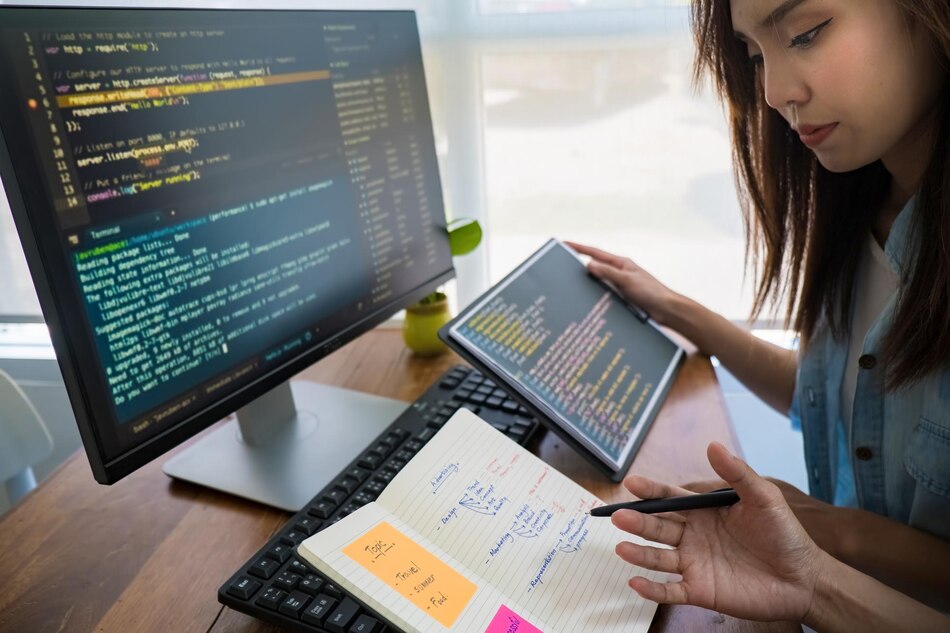Best Flutter Course & Top 8 Flutter Interview Questions for 2023
Flutter has gained immense popularity among developers for its ability to build cross-platform mobile applications with a single codebase. With its vibrant community and continuous updates, Flutter has become a go-to framework for app development. As we step into 2023, it’s crucial to stay updated with the best Flutter courses and be prepared for Flutter interviews. In this blog post, we will explore the top Flutter course recommendations and discuss the most frequently asked Flutter interview questions to help you excel in your Flutter journey.
The Best Flutter Course for 2023:
When it comes to learning Flutter, having a comprehensive and up-to-date course is essential. Here’s a highly recommended course for 2023:
The Complete Flutter Development course is available at Ahmedabad Computer Education. This is designed for beginners and covers everything you need to know to become a proficient Flutter developer. From the basics of Flutter and Dart programming to advanced topics like state management and Firebase integration, We provide in-depth explanations and hands-on projects. With real-world development exercises and Live project work, this course is a valuable resource for anyone looking to master Flutter in 2023.
Top 8 Flutter Interview Questions for 2023:
Question 1: What is Flutter, and how does it differ from other cross-platform frameworks?
Answer: Flutter is an open-source UI software development kit (SDK) developed by Google. It allows developers to build native interfaces for iOS and Android from a single codebase using the Dart programming language. Unlike other cross-platform frameworks, Flutter renders its widgets, providing a high-performance user experience with customizable UI elements.
2.2. Question 2: Explain the Flutter widget tree and its significance in the Flutter framework.
Answer: In Flutter, every element on the screen is a widget. The widget tree represents the hierarchy of these elements. Each widget can have child widgets, and the entire tree forms the UI of the application. The widget tree is essential as it allows Flutter to efficiently rebuild only the necessary parts of the UI when changes occur, optimizing performance.
2.3. Question 3: What are stateful and stateless widgets in Flutter? How are they different?
Answer: Stateful widgets maintain a mutable state, which can change over time. They are used when the UI needs to reflect dynamic data. In contrast, stateless widgets are immutable and do not change once created. They are used for UI elements that do not require internal state management. The key difference is that stateful widgets have a mutable state, while stateless widgets do not.
2.4. Question 4: What is the purpose of the StatefulWidget class in Flutter?
Answer: The StatefulWidget class in Flutter is used when a widget needs to manage mutable state. It consists of two classes: stateful widget and State. StatefulWidget holds the configuration for the widget, while State holds the mutable state. The separation allows Flutter to efficiently update only the necessary parts of the UI.
2.5. Question 5: How does Flutter handle navigation between screens or pages?
Answer: Flutter uses a navigation stack to handle screen transitions. The navigator manages a stack of route objects, where each route represents a screen or page. Developers can push new routes onto the stack to navigate forward or pop routes to navigate back. Flutter’s Navigator class provides various methods and widgets for managing navigation.
2.6. Question 6: What is the difference between hot reload and hot restart in Flutter?
Answer: Hot reload is a feature in Flutter that allows developers to see the changes made in the code immediately reflected in the running app. It maintains the app’s state while updating the UI. On the other hand, a hot restart restarts the app, resetting its state. Hot reload is faster and more convenient for UI changes, while hot restart is useful for changes that require the app’s state to be reset.
2.7. Question 7: Explain the concept of “widget rebuilding” in Flutter.
Answer: Widget rebuilding refers to the process of updating the UI in response to changes in state or other factors. When Flutter detects a change in the widget tree, it rebuilds the affected widgets efficiently. By rebuilding only what is necessary, Flutter ensures optimal performance and a smooth user experience.
2.8. Question 8: What are some popular packages in Flutter, and how do they enhance app development?
Answer: Flutter has a vast ecosystem of packages that extend its functionality. Some popular packages include:
Provider: A state management solution that allows efficient sharing of state between widgets.
Dio: A powerful HTTP client for making network requests.
Firebase: A suite of cloud-based services for backend integration, including authentication, databases, and storage.
Flutter Animation: A package for creating complex animations and transitions in Flutter applications.
Flutter Image Picker: A package that simplifies selecting images from the device’s gallery or camera.
Conclusion:
As Flutter continues to evolve, staying updated with the best courses and interview questions is crucial for both beginners and experienced developers. The recommended course, “The Complete Flutter Development Bootcamp using Dart” by Angela Yu, provides comprehensive learning material for mastering Flutter in 2023. Additionally, the top eight interview questions discussed in this blog post will help you prepare for Flutter interviews and showcase your expertise in this dynamic framework. Embrace Flutter’s potential and equip yourself with the knowledge and skills required to succeed in the ever-growing world of mobile app development.





